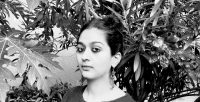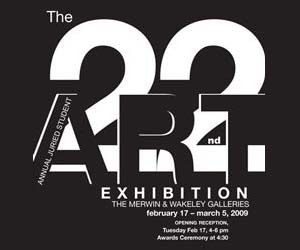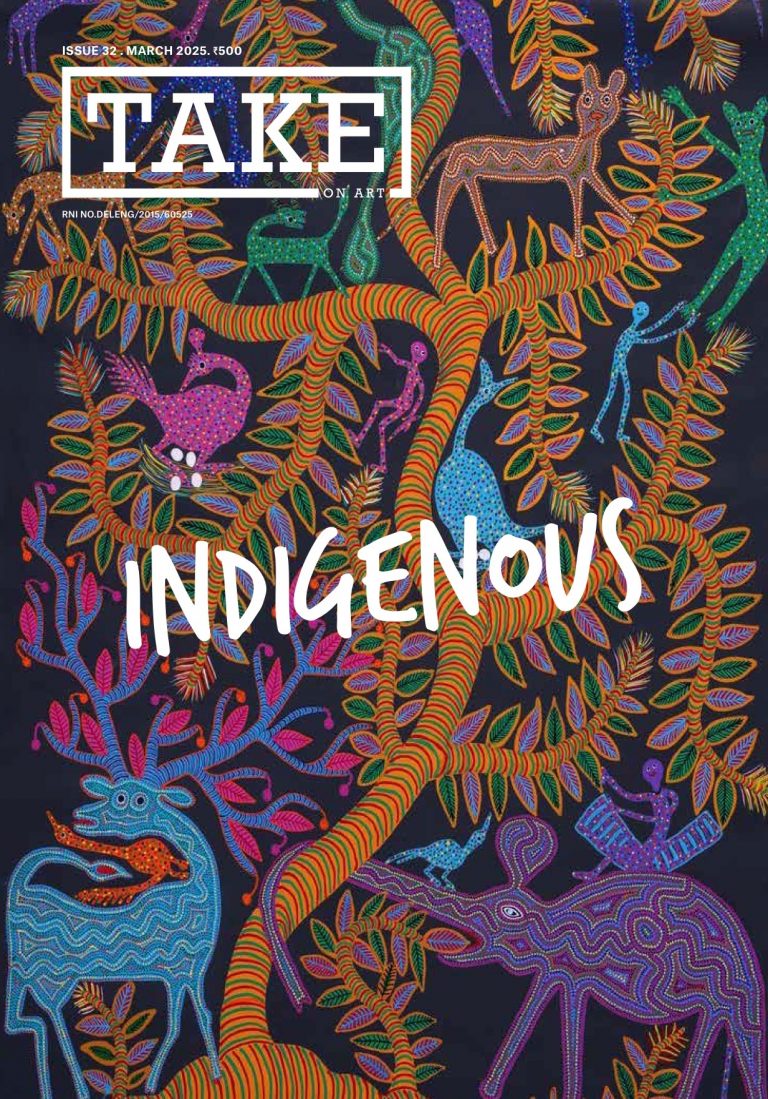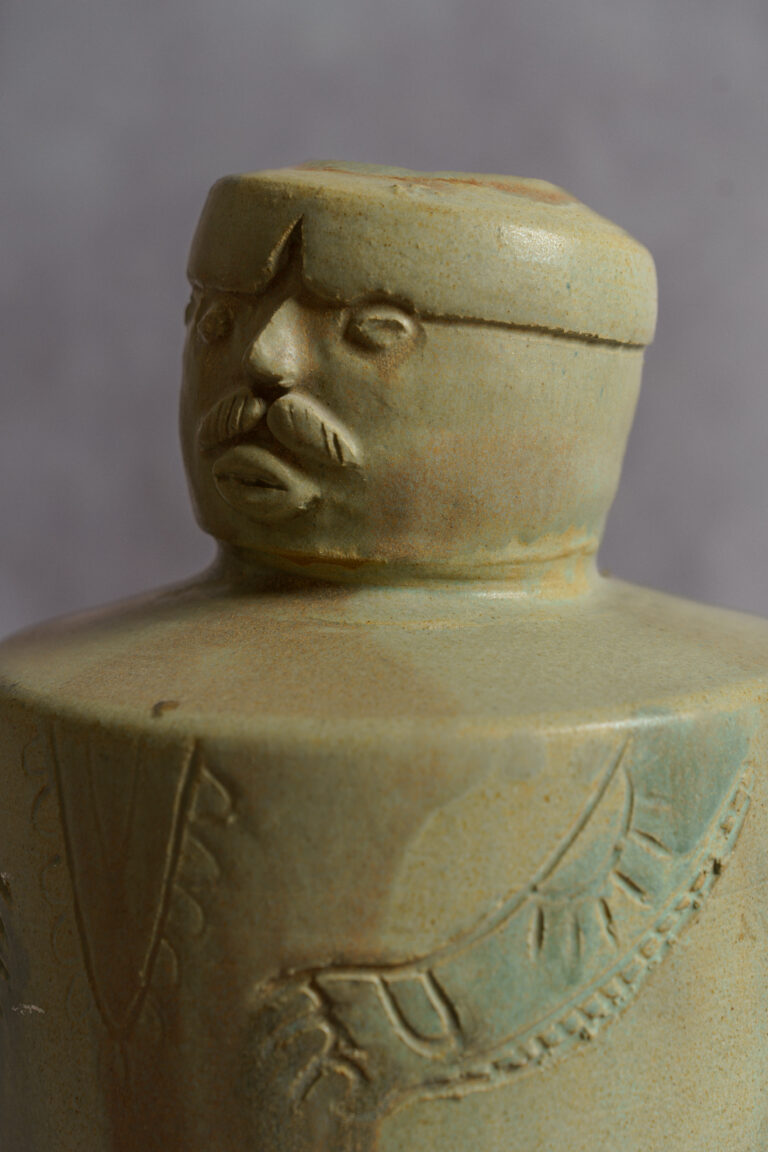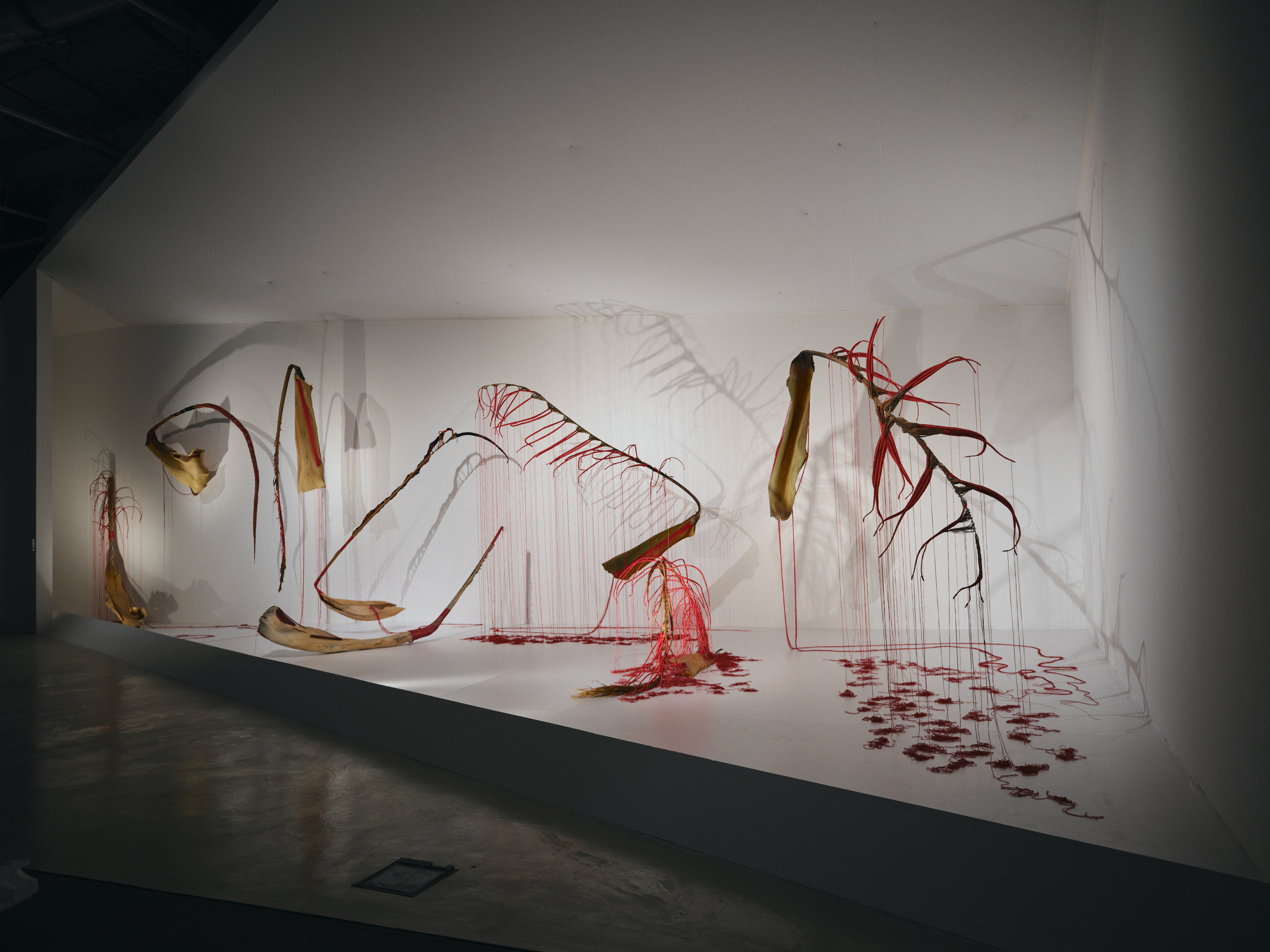 Lina Gazzaz, Tracing Lines of Growth: Transfiguration of the Palm Trees. Image Courtesy: Artur Weber.
Lina Gazzaz, Tracing Lines of Growth: Transfiguration of the Palm Trees. Image Courtesy: Artur Weber.
The promise of diversity, equity and inclusion initiatives—entwined with the advent of a digital way of life as part of globalisation—reinstates the necessity to retrace the roots of belonging. Shrinking borders, shifting cultures and saturated hyperconnectivity at the cusp of postcolonial nationalism and global modernity, within the gamut of arts, prompt a search for refuge within the circuits of memory. The exercise to realign the (b)orders of rendezvous between Self and Other is instrumental to reclaim the points of epistemology — a resistance to assert an arrival at the grounds of ontology. The recurrent approach to unfold the layers of vocabulary around the conceptual framework of memory is an act to revisit what constitutes home, belonging and identity. This anchors the exhibition Art of the Kingdom: Poetic Illumination, curated by Diana Wechsler at the Saudi Arabia Museum of Contemporary Art (SAMoCA), Jax District, Riyadh. The display, in the words of Wechsler, probes the questions: “Can we truly approach a culture through an exhibition of contemporary art? In what ways do the visual arts reshape our narratives about society, memory, the past and the present?” As the title of the exhibition Poetic Illumination — with its multigenre artworks by seventeen Saudi Arabian intergenerational artists — suggests it foregrounds a lyrical labyrinth to witness the repository of the Art of the Kingdom.
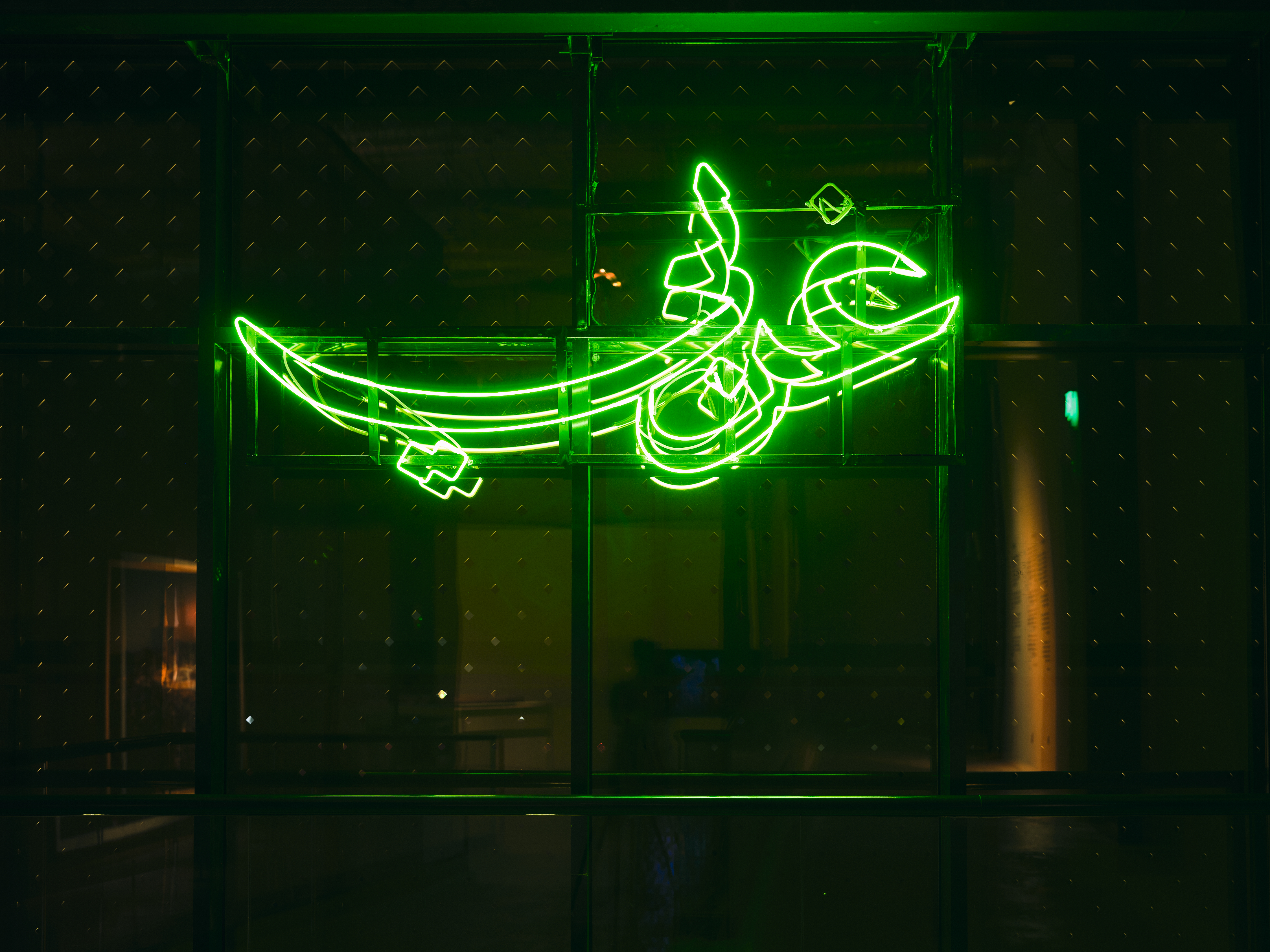 Nasser Al Salem, Arabi, Gharbi. Image Courtesy: Artur Weber.
Nasser Al Salem, Arabi, Gharbi. Image Courtesy: Artur Weber.
To encounter the grandeur of the exhibition hall is to experience the artworks’ play with the scale and scope of the curatorial premise. The viewer’s body is constantly impelled to be aware of the dimension of each work – a nudge to initiate a deeper excavation into the multifaceted layers of the Kingdom’s cultural history. At the entrance, before descending the ramp into the main gallery, the visibility of much of the exhibition serves as a moment of anticipation—an arresting archive awaiting its epiphany. Halfway down the ramp, the dynamic green neon installation “Arabi, Gharbi” by Nasser Al Salem steers the linguistic currents of the Kingdom’s identity – an oscillation between Arabic and Western worlds. A single calligraphic script reads “Arabi” (Arab) as well as “Gharbi” (West), determined by the positioning of a dot that toggles between on and off. The visual structure of the language thus becomes a metaphor for colonial illusions: the minimal difference of a dot gestures toward the parody of Western epistemological dominance over the Orient.
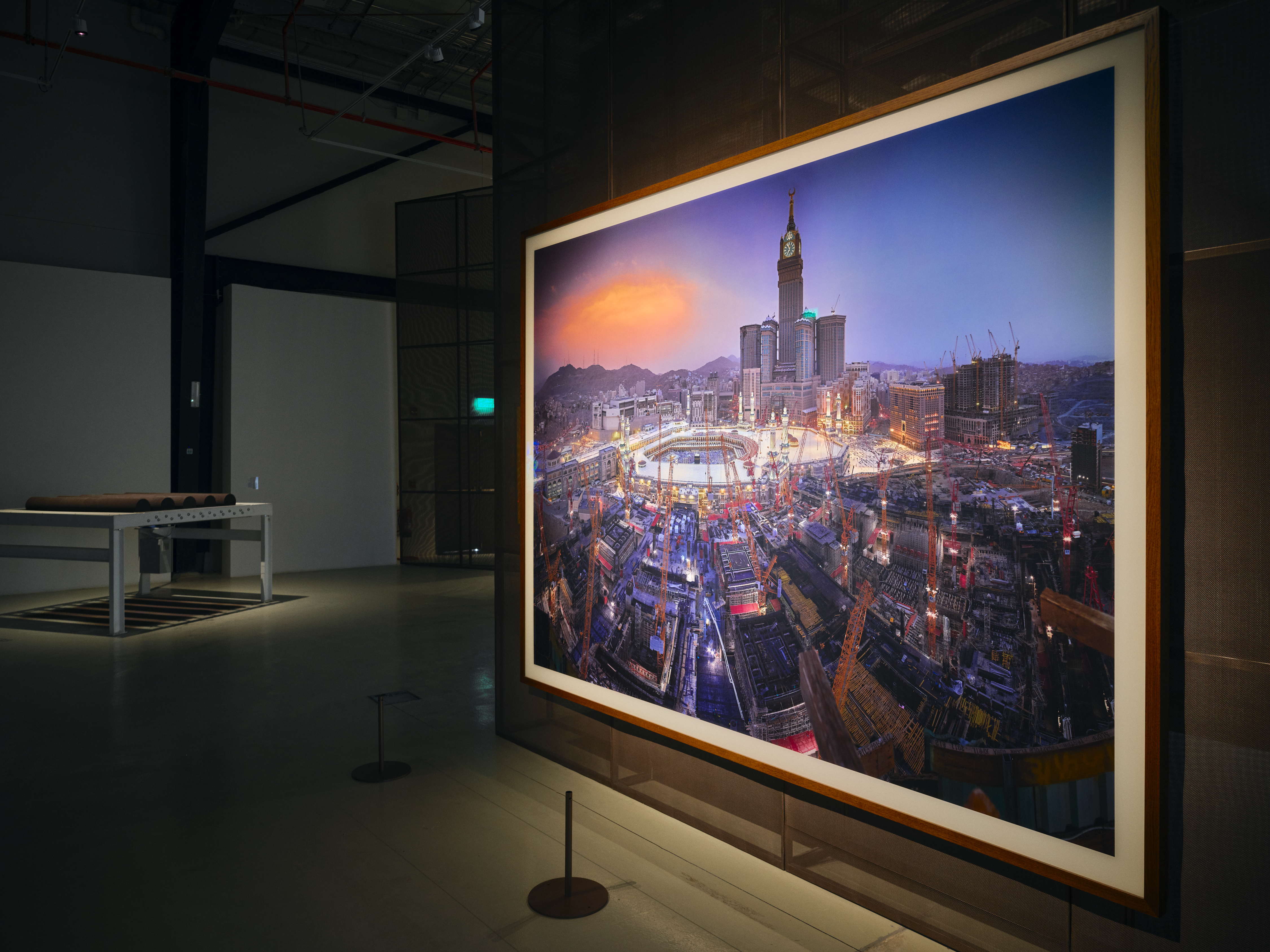 Ahmed Mater, Golden Hour, from the Desert of Pharan series. Image Courtesy: Artur Weber.
Ahmed Mater, Golden Hour, from the Desert of Pharan series. Image Courtesy: Artur Weber.
The Western project of expansion and exploitation, entrenched in bias, is addressed in Ahmed Mater’s photograph “Golden Hour” from the “Desert of Pharan” series. A bird’s-eye view of Mecca emphasises towering construction sites, foregrounded by cranes and the vintage-styled colossal clock tower, set against a backdrop of desert rock hills marked by transmission towers. The visual narrative juxtaposes sacred space and modern urban development, asserting that the sanctity of Mecca is preserved even amid efforts to further tourism and urban transformation. Behind this life-sized photograph stands “The Last Tashahhud”—a light box installation by Moath Alofi. Each box contains images of modest mosques built by philanthropists along roads to Medina. These humble structures become visible only through the attentiveness of passers-by. The work’s titled “The Last Tashahhud”, translates to “the last witness” in English, transforms the light boxes into symbolic markers of the small, deliberate steps taken during a devotional journey.
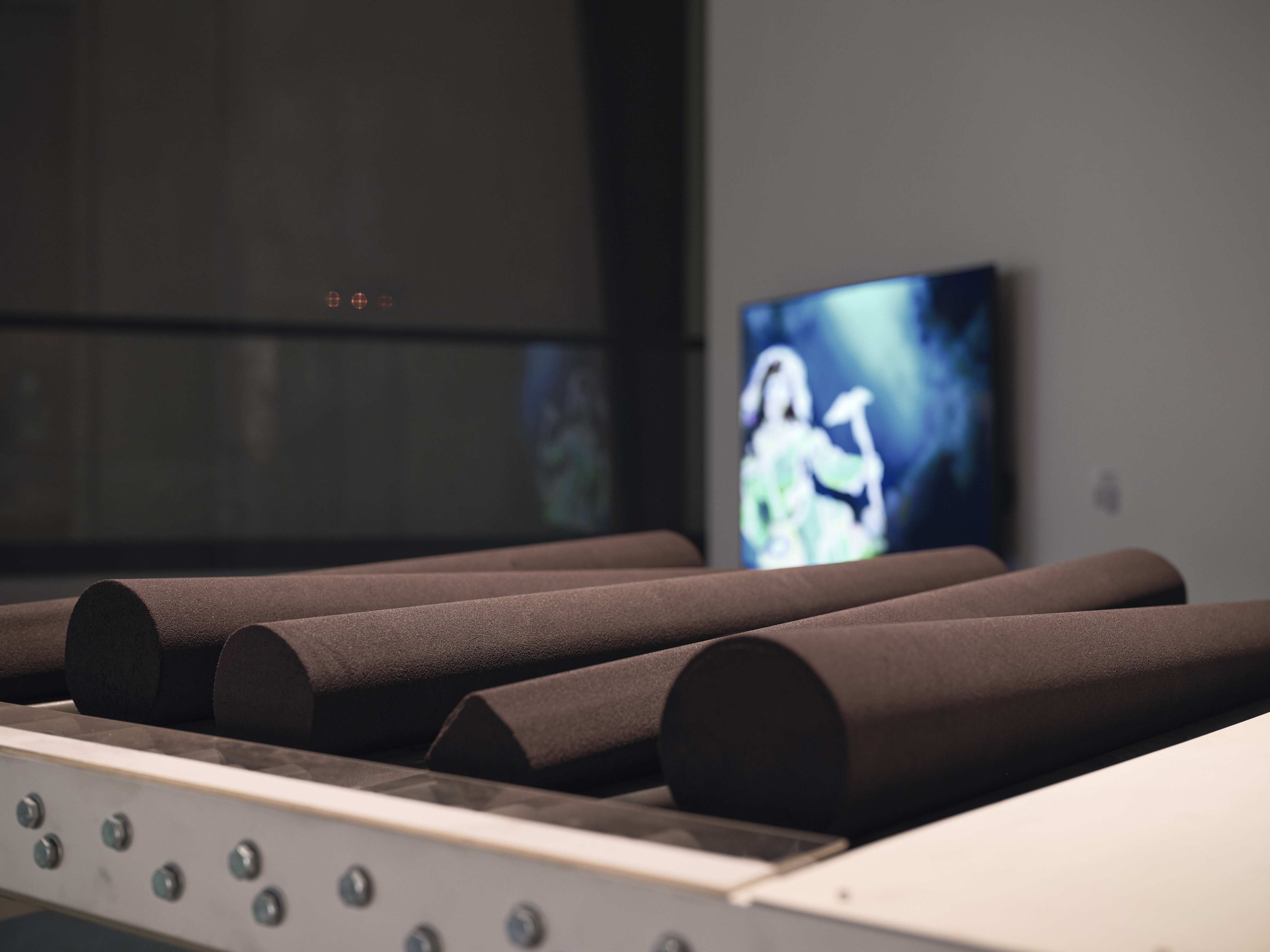 Muhannad Shono, Return to the Infinite. Image Courtesy: Artur Weber.
Muhannad Shono, Return to the Infinite. Image Courtesy: Artur Weber.
The ubiquitous sand of the Kingdom is in a constant state of flux, emulating the mutable nature of oral narratives. Artist Muhannad Shono draws on this organic quality in his kinetic installation “Return to the Infinite”. Five sculptural pillars—made of sand, black pigment and resin—rest on an industrial table with rotating rollers. The gradual motion of sand in an hourglass measures time to invite the viewers to pause, perceive and ponder—a commentary on temporality and transformation. In close proximity to Shono’s interactive installation stands “Tracing Lines of Growth: Transfiguration of the Palm Trees” by Lina Gazzaz. Spanning floor to ceiling it is developed on this idea of what is all-pervasive turns into oblivion. Using hues of brown and red, Gazzaz elevates decomposing palm leaves by binding them with satin threads, reclaiming them from decay. Not limited to the visual attention, in the hands of Gazzaz the palm leaves are resurged from its state of decomposition when tied by the satin threads. The fragile yet gripping “Tracing Lines of Growth Transfiguration of the Palm Trees” hints at the metamorphosis the palm leaves have borne over the years: organic tensions, folds and deformations.
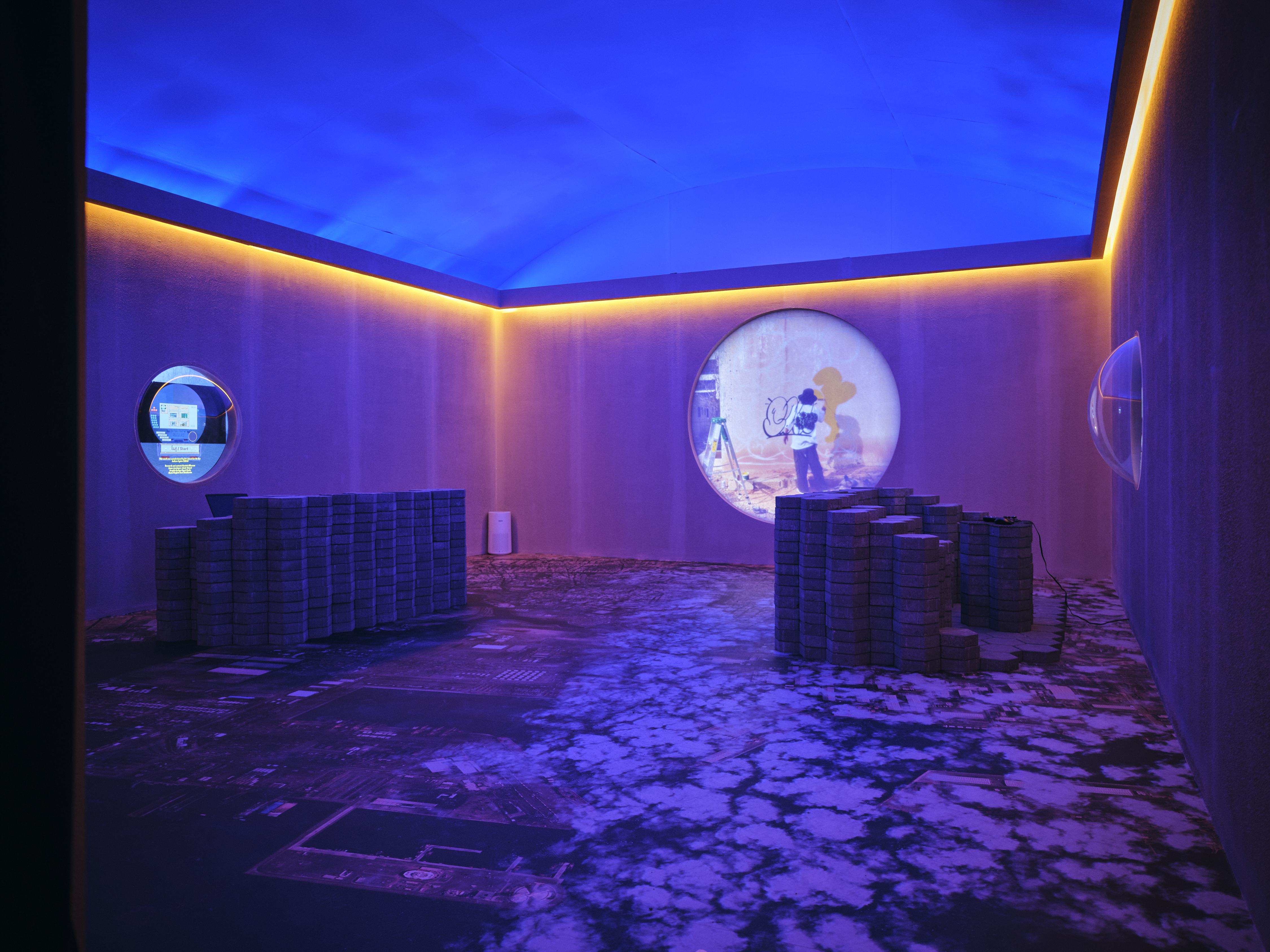 Basmah Felemban, Brink of the Sea. Image Courtesy: Artur Weber.
Basmah Felemban, Brink of the Sea. Image Courtesy: Artur Weber.
Jeddah, the Kingdom’s port city, breathes mythology, history and music at every juncture. Its cultural complexity—where tradition intersects with contemporary sensibility—shapes Basmah Felemban’s interactive installation “Brink of the Sea”. Initially conceived as a game map of South Jeddah, the project has expanded to encompass the entire city. As one enters the dimly lit room, the map of the city casted in blue and white on the floor lets the viewers simulate an act to traverse through the lanes of Jeddah. The visitors are encouraged to play the video games dedicated to enhancing the experience of the city. The everyday experience conjured through the installation insinuates intensity with which the city carries the bearing of cultural history.
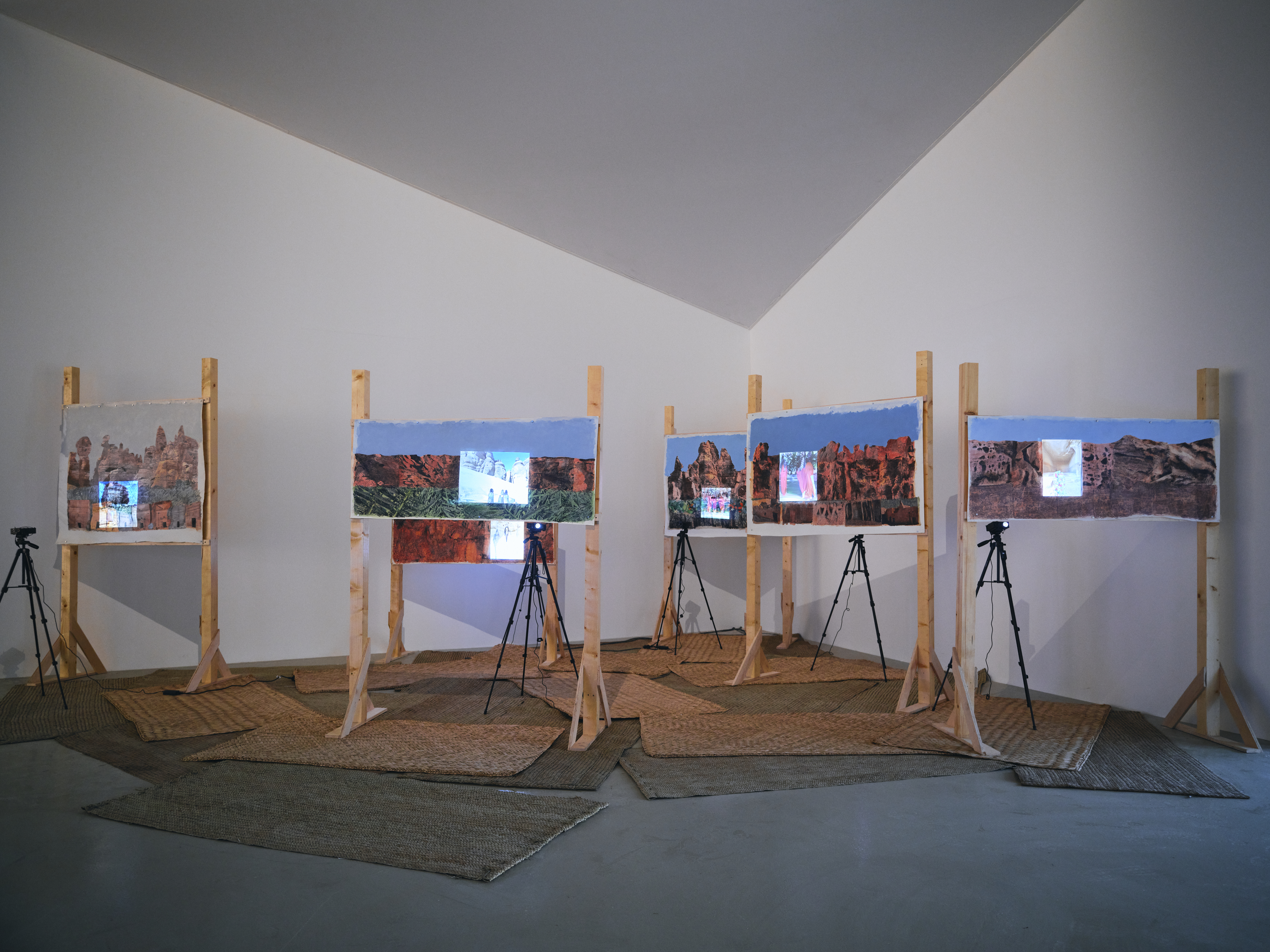 Daniah Al Saleh, Hinat. Image Courtesy: Artur Weber.
Daniah Al Saleh, Hinat. Image Courtesy: Artur Weber.
Through the annals of history across different pockets of the globe, the women have been bearers of benevolence and wisdom. Yet the recognition of their inevitability in its entirety is yet to receive its impending appreciation. Daniah Al Saleh’s in-situ installation “Hinat”, centered on the figure of a woman, reclaims narratives of identity and belonging in a patriarchal region. Despite archaeological efforts to trace the origins of Middle Eastern civilizations, women remain conspicuously absent. “Hinat” —a multi-screen installation—reanimates the face of a Nabataean woman. Wooden panels bearing images of archaeological sites and anonymous female silhouettes, set on sand, blur the boundaries of fiction and reality. The piece negates a strident feminist voice in favour of evoking the irrevocable presence of shadow and silence.
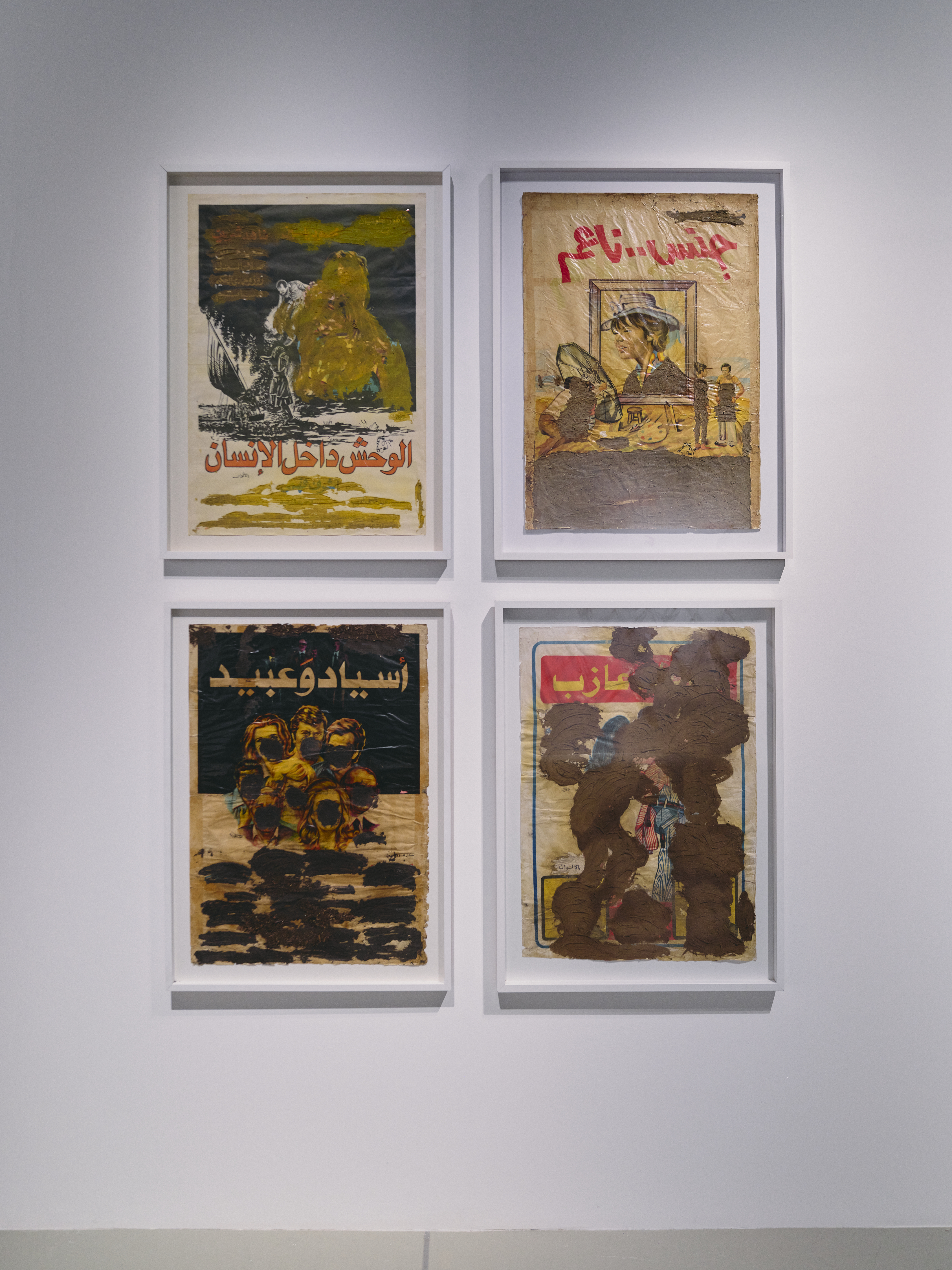 Ayman Yossri, Posters Series. Image Courtesy: Artur Weber.
Ayman Yossri, Posters Series. Image Courtesy: Artur Weber.
Ayman Yossri’s selected “Posters Series” constitutes a crucial engagement with the visual archives of the global cultural industry, particularly as they intersect with Saudi Arabian cultural reception during the late twentieth century. By appropriating and intervening in pre-existing materials such as film posters Yossri re-evaluates the visual memory to propose a critical methodology for engaging with the cultural residues of media circulation in the Gulf. A central formal gesture in Yossri’s work is the application of sand to the surface of these framed images. This acts both as a literal and emblematic intervention: it obscures the visual content while simultaneously invoking the geographic and symbolic terrain of Saudi Arabia. The sand functions as an indexical marker of place, elucidates reclamation of the fragmented narratives within a local epistemological context. In doing so, Yossri reactivates these images, transforming them from passive cultural artefacts into contested sites of memory and identity formation.
The demand and consumption for digital arts has engulfed the art ecosystem especially in the Gulf. An alternative to digital inundation of information, the grains of sand, textures of the palm leaves, tensions within the veneer of wood types and pixels of images – attends to sustain the desire for visceral experience. Without losing sight on a fine balance between a tactile approach of tangible art and an aesthetic of moving images in video arts, Wechsler remaps the routes of cultural history and identity in its tangible form. In other words, through immersive installations, multimedia storytelling and archival interventions, the exhibition challenges viewers to reimagine cultural history not as a static relic, but a site of perpetual reinterpretation. In weaving together the threads of identity and belonging, under the curatorial lens of memory Art of the Kingdom: Poetic Illumination emerges as a reflective site of cultural reclamation and epistemic resurgence. By centering on intergenerational artists, the exhibition is a terrain to traverse through global modernity and local histories to let poetic be an extension of a political tool and illumination a response to artist’s inquiry. The exhibition stands as both a testament and a dialogue—a lyrical testament to the enduring power of art to reclaim the cultural history in an effort to resurge the collective and individual imaginaries.
Art of the Kingdom: Poetic Illumination commissioned by the Museums Commission part of the Saudi Ministry of Culture, debuted at the historic Paço Imperial in Rio de Janeiro, Brazil, in November 2024. Following the second edition at SAMoCA, Jax District, the exhibition travels to Beijing National Museum, China, in summer of 2025 to commemorate the 25th anniversary of the establishment of Saudi-Chinese diplomatic relations.
Art of the Kingdom: Poetic Illumination, Curated by Diana Wechsler, 24 February – 24 May, 2025. Saudi Arabia Museum of Contemporary Art (SAMoCA), Jax District, Riyadh.









